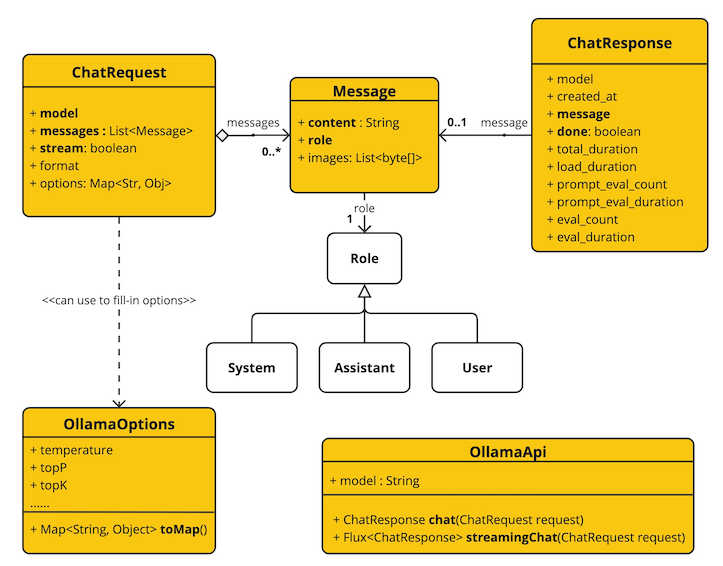Springboot整合seata分布式事务
一、创建seata日志表
-- 注意此处0.3.0+ 增加唯一索引 ux_undo_log
CREATE TABLE `undo_log` (
`id` bigint(20) NOT NULL AUTO_INCREMENT,
`branch_id` bigint(20) NOT NULL,
`xid` varchar(100) NOT NULL,
`context` varchar(128) NOT NULL,
`rollback_info` longblob NOT NULL,
`log_status` int(11) NOT NULL,
`log_created` datetime NOT NULL,
`log_modified` datetime NOT NULL,
`ext` varchar(100) DEFAULT NULL,
PRIMARY KEY (`id`),
UNIQUE KEY `ux_undo_log` (`xid`,`branch_id`)
) ENGINE=InnoDB AUTO_INCREMENT=1 DEFAULT CHARSET=utf8;二、安装事务协调器(seata-server)
1、下载地址
2、导入依赖
<dependency>
<groupId>com.alibaba.cloud</groupId>
<artifactId>spring-cloud-starter-alibaba-seata</artifactId>
</dependency>3、启动seata服务器
4、seata文件说明
registry.conf:注册中心配置。
这里执行注册中西为nacos。type = "nacos",
config {执行seata配置数据放在那里,这里默认使用文件放配置数据。 type = "file"
file.conf:seata默认配置信息存放这里。
例如,事务日志存放地方配置
## transaction log store, only used in server side
store {
## store mode: file、db
mode = "file"
## file store property
file {
## store location dir
dir = "sessionStore"
# branch session size , if exceeded first try compress lockkey, still exceeded throws exceptions
maxBranchSessionSize = 16384
# globe session size , if exceeded throws exceptions
maxGlobalSessionSize = 512
# file buffer size , if exceeded allocate new buffer
fileWriteBufferCacheSize = 16384
# when recover batch read size
sessionReloadReadSize = 100
# async, sync
flushDiskMode = async
}
## database store property
db {
## the implement of javax.sql.DataSource, such as DruidDataSource(druid)/BasicDataSource(dbcp) etc.
datasource = "druid"
## mysql/oracle/postgresql/h2/oceanbase etc.
dbType = "mysql"
driverClassName = "com.mysql.jdbc.Driver"
## if using mysql to store the data, recommend add rewriteBatchedStatements=true in jdbc connection param
url = "jdbc:mysql://127.0.0.1:3306/seata?rewriteBatchedStatements=true"
user = "mysql"
password = "mysql"
minConn = 5
maxConn = 30
globalTable = "global_table"
branchTable = "branch_table"
lockTable = "lock_table"
queryLimit = 100
}
}三、自定义代理数据源
注意:所有想要用到分布式事务的微服务使用seata DataSourceProxy代理自己的数据源。springboot默认使用的是Hikari数据源。
DataSourceAutoConfiguration.java源代码:
//
// Source code recreated from a .class file by IntelliJ IDEA
// (powered by FernFlower decompiler)
//
package org.springframework.boot.autoconfigure.jdbc;
import javax.sql.DataSource;
import javax.sql.XADataSource;
import org.springframework.boot.autoconfigure.condition.AnyNestedCondition;
import org.springframework.boot.autoconfigure.condition.ConditionMessage;
import org.springframework.boot.autoconfigure.condition.ConditionOutcome;
import org.springframework.boot.autoconfigure.condition.ConditionalOnClass;
import org.springframework.boot.autoconfigure.condition.ConditionalOnMissingBean;
import org.springframework.boot.autoconfigure.condition.ConditionalOnProperty;
import org.springframework.boot.autoconfigure.condition.SpringBootCondition;
import org.springframework.boot.autoconfigure.condition.ConditionMessage.Builder;
import org.springframework.boot.autoconfigure.jdbc.DataSourceConfiguration.Dbcp2;
import org.springframework.boot.autoconfigure.jdbc.DataSourceConfiguration.Generic;
import org.springframework.boot.autoconfigure.jdbc.DataSourceConfiguration.Hikari;
import org.springframework.boot.autoconfigure.jdbc.DataSourceConfiguration.OracleUcp;
import org.springframework.boot.autoconfigure.jdbc.DataSourceConfiguration.Tomcat;
import org.springframework.boot.autoconfigure.jdbc.DataSourceInitializationConfiguration.InitializationSpecificCredentialsDataSourceInitializationConfiguration;
import org.springframework.boot.autoconfigure.jdbc.DataSourceInitializationConfiguration.SharedCredentialsDataSourceInitializationConfiguration;
import org.springframework.boot.autoconfigure.jdbc.metadata.DataSourcePoolMetadataProvidersConfiguration;
import org.springframework.boot.context.properties.EnableConfigurationProperties;
import org.springframework.boot.jdbc.DataSourceBuilder;
import org.springframework.boot.jdbc.EmbeddedDatabaseConnection;
import org.springframework.context.annotation.Condition;
import org.springframework.context.annotation.ConditionContext;
import org.springframework.context.annotation.Conditional;
import org.springframework.context.annotation.Configuration;
import org.springframework.context.annotation.Import;
import org.springframework.context.annotation.ConfigurationCondition.ConfigurationPhase;
import org.springframework.core.env.Environment;
import org.springframework.core.type.AnnotatedTypeMetadata;
import org.springframework.jdbc.datasource.embedded.EmbeddedDatabaseType;
import org.springframework.util.StringUtils;
@Configuration(
proxyBeanMethods = false
)
@ConditionalOnClass({DataSource.class, EmbeddedDatabaseType.class})
@ConditionalOnMissingBean(
type = {"io.r2dbc.spi.ConnectionFactory"}
)
@EnableConfigurationProperties({DataSourceProperties.class})
@Import({DataSourcePoolMetadataProvidersConfiguration.class, InitializationSpecificCredentialsDataSourceInitializationConfiguration.class, SharedCredentialsDataSourceInitializationConfiguration.class})
public class DataSourceAutoConfiguration {
public DataSourceAutoConfiguration() {
}
static class EmbeddedDatabaseCondition extends SpringBootCondition {
private static final String DATASOURCE_URL_PROPERTY = "spring.datasource.url";
private final SpringBootCondition pooledCondition = new DataSourceAutoConfiguration.PooledDataSourceCondition();
EmbeddedDatabaseCondition() {
}
public ConditionOutcome getMatchOutcome(ConditionContext context, AnnotatedTypeMetadata metadata) {
Builder message = ConditionMessage.forCondition("EmbeddedDataSource", new Object[0]);
if (this.hasDataSourceUrlProperty(context)) {
return ConditionOutcome.noMatch(message.because("spring.datasource.url is set"));
} else if (this.anyMatches(context, metadata, new Condition[]{this.pooledCondition})) {
return ConditionOutcome.noMatch(message.foundExactly("supported pooled data source"));
} else {
EmbeddedDatabaseType type = EmbeddedDatabaseConnection.get(context.getClassLoader()).getType();
return type == null ? ConditionOutcome.noMatch(message.didNotFind("embedded database").atAll()) : ConditionOutcome.match(message.found("embedded database").items(new Object[]{type}));
}
}
private boolean hasDataSourceUrlProperty(ConditionContext context) {
Environment environment = context.getEnvironment();
if (environment.containsProperty("spring.datasource.url")) {
try {
return StringUtils.hasText(environment.getProperty("spring.datasource.url"));
} catch (IllegalArgumentException var4) {
}
}
return false;
}
}
static class PooledDataSourceAvailableCondition extends SpringBootCondition {
PooledDataSourceAvailableCondition() {
}
public ConditionOutcome getMatchOutcome(ConditionContext context, AnnotatedTypeMetadata metadata) {
Builder message = ConditionMessage.forCondition("PooledDataSource", new Object[0]);
return DataSourceBuilder.findType(context.getClassLoader()) != null ? ConditionOutcome.match(message.foundExactly("supported DataSource")) : ConditionOutcome.noMatch(message.didNotFind("supported DataSource").atAll());
}
}
static class PooledDataSourceCondition extends AnyNestedCondition {
PooledDataSourceCondition() {
super(ConfigurationPhase.PARSE_CONFIGURATION);
}
@Conditional({DataSourceAutoConfiguration.PooledDataSourceAvailableCondition.class})
static class PooledDataSourceAvailable {
PooledDataSourceAvailable() {
}
}
@ConditionalOnProperty(
prefix = "spring.datasource",
name = {"type"}
)
static class ExplicitType {
ExplicitType() {
}
}
}
@Configuration(
proxyBeanMethods = false
)
@Conditional({DataSourceAutoConfiguration.PooledDataSourceCondition.class})
@ConditionalOnMissingBean({DataSource.class, XADataSource.class})
@Import({Hikari.class, Tomcat.class, Dbcp2.class, OracleUcp.class, Generic.class, DataSourceJmxConfiguration.class})
protected static class PooledDataSourceConfiguration {
protected PooledDataSourceConfiguration() {
}
}
@Configuration(
proxyBeanMethods = false
)
@Conditional({DataSourceAutoConfiguration.EmbeddedDatabaseCondition.class})
@ConditionalOnMissingBean({DataSource.class, XADataSource.class})
@Import({EmbeddedDataSourceConfiguration.class})
protected static class EmbeddedDatabaseConfiguration {
protected EmbeddedDatabaseConfiguration() {
}
}
}
导入很多数据源 @Import({Hikari.class, Tomcat.class, Dbcp2.class, OracleUcp.class, Generic.class, DataSourceJmxConfiguration.class})
DataSourceConfiguration.java源代码
@Configuration(
proxyBeanMethods = false
)
@ConditionalOnClass({HikariDataSource.class})
@ConditionalOnMissingBean({DataSource.class})
@ConditionalOnProperty(
name = {"spring.datasource.type"},
havingValue = "com.zaxxer.hikari.HikariDataSource",
matchIfMissing = true
)
static class Hikari {
Hikari() {
}
@Bean
@ConfigurationProperties(
prefix = "spring.datasource.hikari"
)
HikariDataSource dataSource(DataSourceProperties properties) {
HikariDataSource dataSource = (HikariDataSource)DataSourceConfiguration.createDataSource(properties, HikariDataSource.class);
if (StringUtils.hasText(properties.getName())) {
dataSource.setPoolName(properties.getName());
}
return dataSource;
}
}自定义代理数据源配置:
import com.zaxxer.hikari.HikariDataSource;
import io.seata.rm.datasource.DataSourceProxy;
import org.springframework.beans.factory.annotation.Autowired;
import org.springframework.boot.autoconfigure.jdbc.DataSourceProperties;
import org.springframework.context.annotation.Bean;
import org.springframework.context.annotation.Configuration;
import org.springframework.util.StringUtils;
import javax.sql.DataSource;
/**
* @description: Seata自定义代理数据源
* @author: <a href="mailto:batis@foxmail.com">清风</a>
* @date: 2022/3/12 14:41
* @version: 1.0
*/
@Configuration
public class MySeataConfig {
@Autowired
DataSourceProperties dataSourceProperties;
@Bean
public DataSource dataSource(DataSourceProperties dataSourceProperties){
HikariDataSource dataSource = dataSourceProperties.initializeDataSourceBuilder().type(HikariDataSource.class).build();
if (StringUtils.hasText(dataSourceProperties.getName())) {
dataSource.setPoolName(dataSourceProperties.getName());
}
return new DataSourceProxy(dataSource);
}
}四、复制seata配置文件到项目resources下
主要复制seata里面的模板文件file.conf、registry.conf
注意:file.conf 的 service.vgroup_mapping 配置必须和spring.application.name一致。
vgroup_mapping.{应用名称}-fescar-service-group = "default"
service{
vgroup_mapping.family-booking-fescar-service-group = "default"
}family-booking:微服务名字
也可以通过配置 spring.cloud.alibaba.seata.tx-service-group修改后缀,但是必须和file.conf中的配置保持一致
五、使用
在分布式事务入口方法加上全局事务注解@GlobalTransactional,远程调用方法上加本地事务注解@Transactional即可。
@GlobalTransactional
@Transactional
public PageUtils queryPage(Map<String, Object> params) {
//调用远程方法,另一个微服务的方法加上小事务@Transactional
}六、使用场景
不适用高并发的场景,适用普通的业务远程调用。seata默认是使用的AT模式。针对高并发场景还是的用柔性事务,消息队列、延迟队列,MQ中间件完成。






评论 (0)